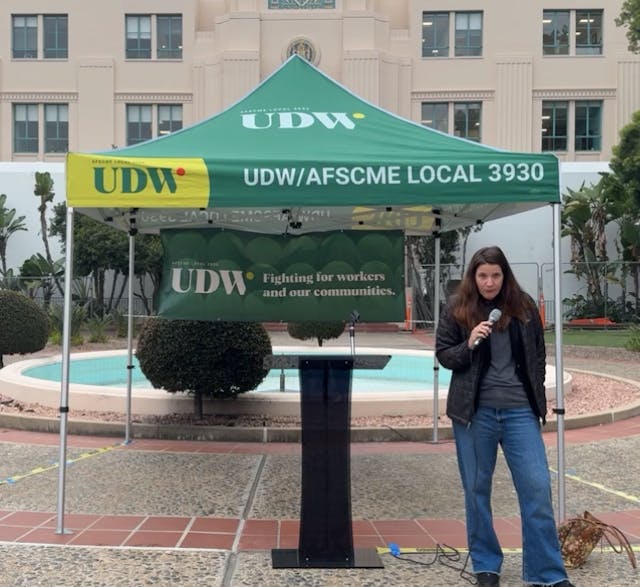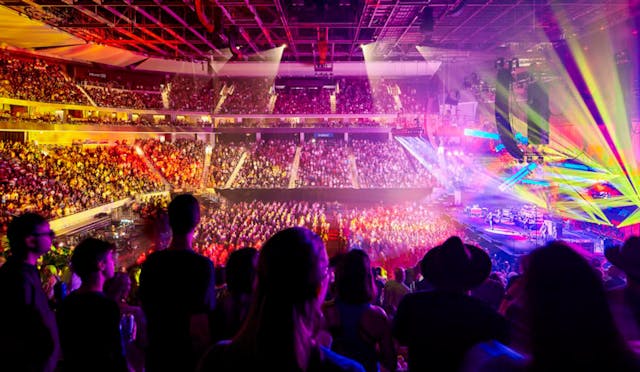The Contradictions of the California Dream
Frontera NorteSur
For better or worse, if something happens in California please be assured it will soon come to a neighborhood theater near you. Hollywood, Silicon Valley, Pleasant Valley Sunday suburban sprawl, the car culture, LSD, and acid rock all launched or took hold in the Golden State.
Politically, California was the birthplace of the 1960s student revolt, the Black Panther Party and La Causa, the great movement of the farmworkers spearheaded by Cesar Chavez and Dolores Huerta. California also gave rise to the modern tax revolt, the Reagan Revolution and state immigration battles like the 1994 fight over Proposition 187.
A place with both no boundaries and seemingly impenetrable ones of all kinds, California is the immigrant nation, bar none. From every corner of the earth, immigrants and their cultures collide, clash, cooperate, fret, and fuse. In the Bay Area, amid a district of Italian, Chinese, Hawaiian and Guatemalan eateries, to name a few, a Japanese barbeque recently opened for business. Its “help wanted” sign advertised in two languages-English and Spanish.
It behooves any journalist, wherever he or she is based, to keep an eye on trends in the most populated and dynamic state of the United States.
Contrary to predictions of a Nanny State-smothered death from high taxes and government overregulation, California is once again on the move. Nearly seven years after the global economy tanked, the state has replenished about 900,000 jobs, businesses are hiring, and new residents come knocking on the door. Cali-fornia’s unemployment rate has declined from 12 percent at the height of the Great Recession to 8.5 percent today, according to the San Francisco Examiner.
In his state of the state speech this week, California Governor Jerry Brown projected a mixture of bullishness, caution and trepidation.
“What a comeback it is: a million new jobs since 2010, a budgetary surplus in the billions and a minimum wage going to $10 a hour,” Brown boasted.
A measure of the economic recovery is the daily freeway scene of the so-called “Google buses” that ferry high-tech professionals from their preferred living quarters in hip, sexy San Francisco to offices in drabber Silicon Valley south of the city.
The bus caravans resemble the system of transporting factory workers to their jobs at the foreign-owned maquiladora plants in the Mexican border city of Ciudad Juarez. But a long commute is where the resemblance ends. The “Google Bus” passengers are very well-compensated for their labor, while the Ciudad Juarez workers, who might wind up assembling the gadgets hatched by the brains of Silicon Valley, are paid subsistence wages at best.
Skewed economics and uneven recovery and burning issues in contemporary California. Although parts of the state are in a visible economic rebound, 1.5 million workers still lack work. In Imperial County on the Mexican border, one in four workers does not have a job.
Next month, more than 20,000 workers in University of California bargaining units represented by the American Federation of State, County and Municipal Employees are scheduled to cast strike votes. According to the union, 99 percent of its members are eligible for some form of public assistance.
“The biggest political story in California this year didn´t happen in the Capitol or other political arenas,” California political reporter Dan Walters recently wrote. “Rather, it was the state’s very uneven and somewhat uncertain recovery from the worst recession since the Great Depression.”
Gentrification is a huge issue in today’s California, especially in the Bay Area.
An Examiner series this month documented how astronomical rents and home prices are driving the working and middle classes from San Francisco.
Based on U.S. Census figures from the 2012 American Community Survey, the Examiner reported that only 33 percent of San Francisco’s households can be considered middle income, compared with 44 percent nationally.
From 2008 to 2012, the percentage of the city’s richest households increased by 10 percent, while the percentage of middle income households declined by a similar number. Median home prices in the covered city have doubled since 2000, according to the newspaper.
“As the debate continues about affordability and the housing crisis, and how large a role the tech sector plays, San Francisco has become a city of haves and have-nots,” a report in the Examiner flatly stated.
In essence, “liberal” or “progressive” San Francisco is becoming a playground for the rich.
Of course, gentrification, often coinciding with the booms in the high-tech sector, is nothing new in California.
Back in the 1970s, rapidly rising land values began displacing San Francisco’s African-American community in the Western Addition. Nowadays, gentrification affects many places in the Bay Area, making the cheaper housing-and long commutes- on the other side of the East Bay hills and into the San Joaquin Valley an attractive option once again.
In a sense, the Bay Area is developing like a traditional Latin American city: the affluent residing in the urban core and the poor on the periphery. Yet, this is a development pattern with perhaps fewer Latin Americans.
Thirty years or forty ago, San Francisco’s Mission District was a vibrant center of Latino and immigrant culture. Mexican, Central American, Puerto Rican, and South American Spanish accents mixed over dinner tables and in diners serving up tacos, pupusas, empanadas, and more.
Recently, a local radio station advertised a community benefit to support “what is left of the Mission.”
Statewide, however, the 21st century is shaping up as a Latino one in California.
According to Univision, Latinos, who stand neck-and-neck with Anglos with slices of the population share at 39 percent for each group, will become the largest ethnic group in the state in 2014 because of higher birth rates.
Many contend that Latinos are largely excluded from the current economic recovery. In downtown Los Angeles, near the spot where the city was founded during the Spanish colonial period of the late 1700s, a statue was erected last year in honor of Antonio Aguilar, the renowned Mexican actor and singer, and as a monument to the American Dream.
Hailing from the state of Zacatecas, Aguilar arrived in L.A. during hard economic times and spent nights sleeping outside on park benches in pursuit of his dream, the statue’s plaque explains. Not far from the monument to the singing horseman, homeless men and women sleep on the ground, wander around the streets and push their belongings in shopping carts that function as mobile homes.
Meanwhile, from Mexico, from China, from El Salvador, and from many lands, newcomers arrive every day to the fabled shores of California. Whether their dreams come to fruition or sink into the foggy mist of the race to the bottom is the question of the times in California and beyond. Immigrant justice, economic fairness, affordable housing, and living wage jobs are among the issues that will define California, the nation and, indeed, much of the world in the coming decades.






